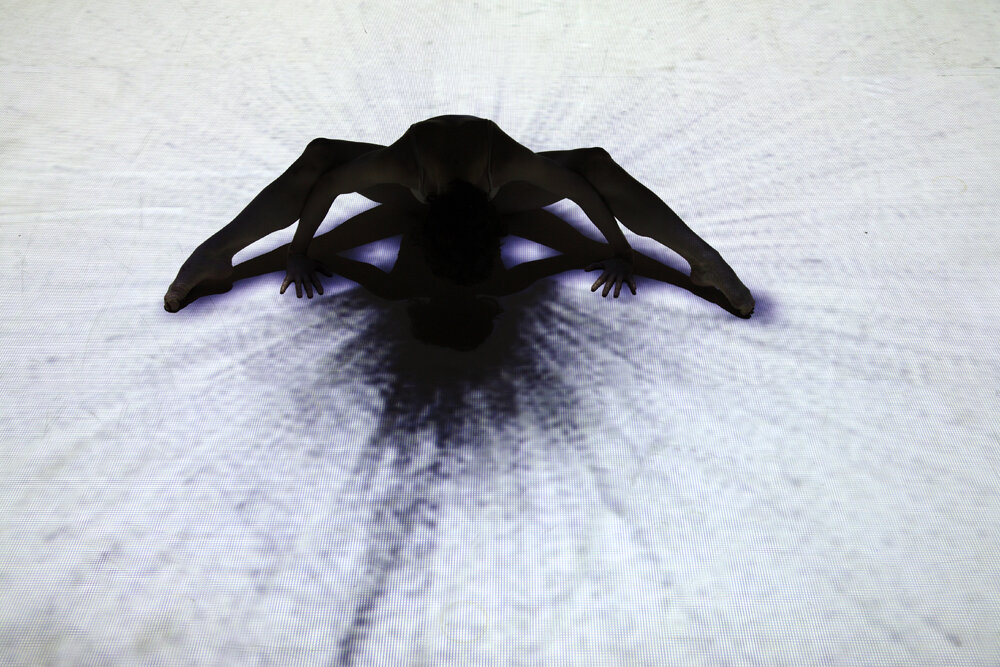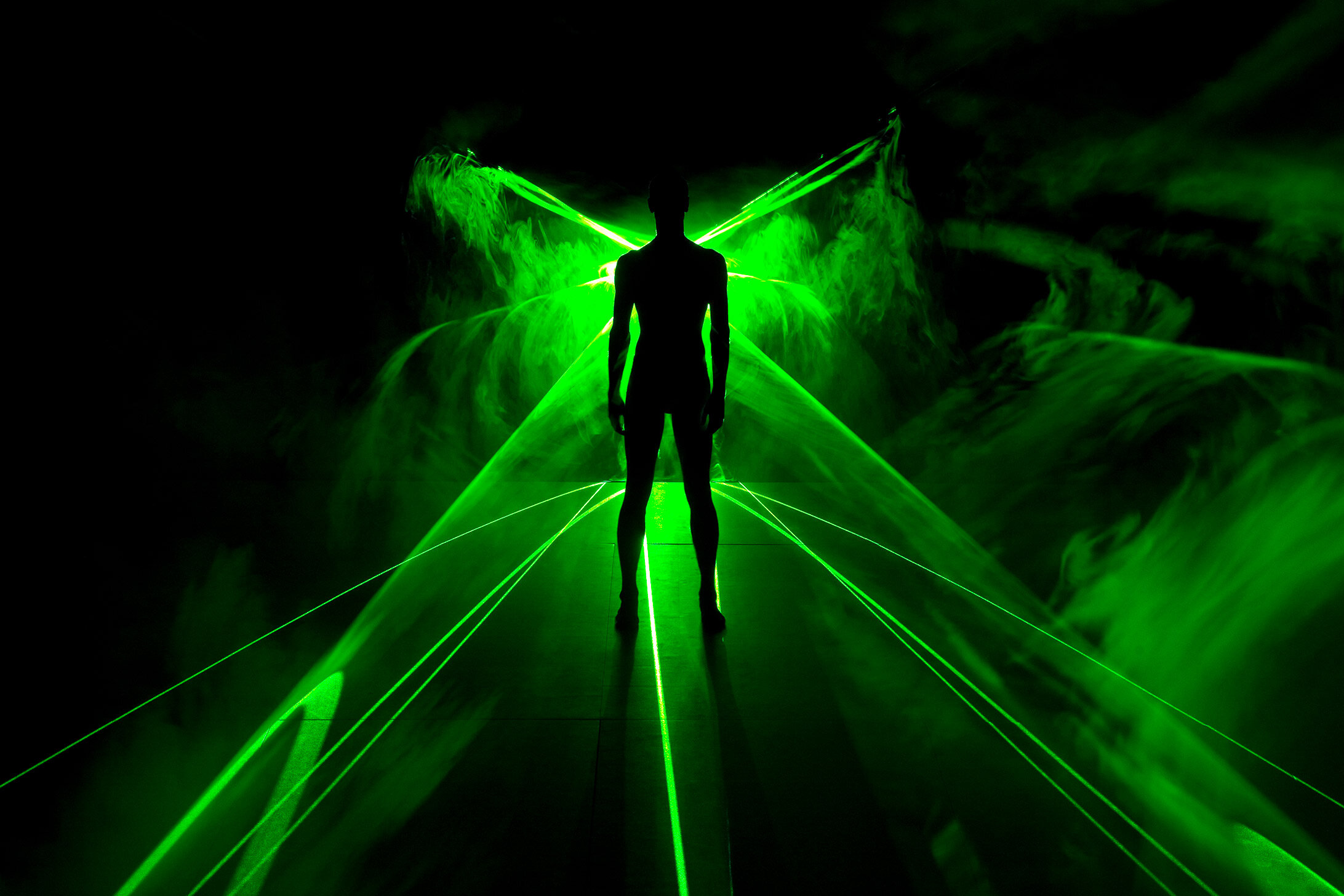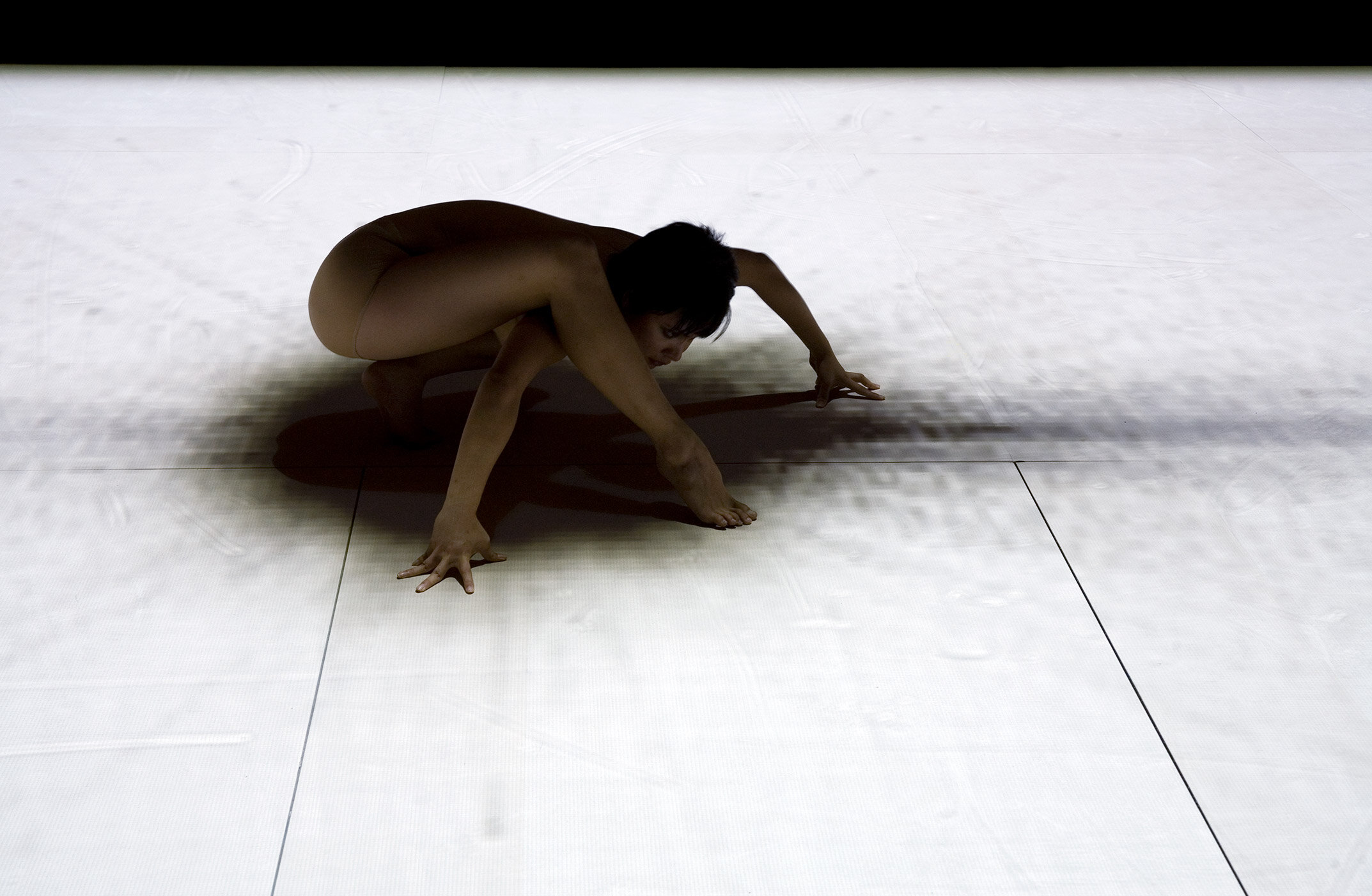Mortal Engine 2008
In Mortal Engine, the limits of the human body were proven an illusion. Utilising state-of-the-art digital projection and sensory technologies, a dancer's form was extended, enveloped, made pliable and dissolved. Emanating from within, shards of crackling light and undulating shadows suggested the most perfect or sinister of souls given shape in real time. Enveloping lasers and movement-responsive video projections painted a shimmering, ever-shifting world and within this visually spinning, humming and oozing environment, dancers fluidly exchanged and combined form with light around them in a constant state of becoming. Witnessing moments of exquisite cosmological perfection, or grotesque evolutionary accidents of existence, audiences for this much-acclaimed work were ceaselessly driven forwards by its vision of permanent change.
Creative Team
Direction & Choreography Gideon Obarzanek
Interactive System Design Frieder Weiss
Laser & Sound Artist Robin Fox
Composition Ben Frost
Costume Design Paula Levis
Lighting Design Damien Cooper
Set Design Richard Dinnen & Gideon Obarzanek
Original Performers Kristy Ayre, Sara Black, Amber Haines, Antony Hamilton, Lee Serle, Charmene Yap
Additional Touring Performers James Shannon, Rennie McDougall, Paul White, Adam Synott, Jorijn Vriesendorp, Marnie Palomeres
Artistic Director Gideon Obarzanek
Executive Producer Rachael Azzopardi
Production Manager Richard Dinnen
Production Manager (Touring) Chris Mercer
Stage Manager Lydia Techenne
Technical Operator Nick Roux
Mechanist Michael Carr
World Premiere
17 January 2008 Sydney
Touring Seasons
2008 Groningen, Edinburgh
2009 Melbourne, Dusseldorf, Mexico City, Salamanca, New York, Philadelphia
2010 Sydney, Melbourne, Hong Kong, Taipei
2011 Brisbane
2012 Moscow, London
Awards
2008 Helpmann Award for Best Visual or Physical Theatre Production
A note from Gideon Obarzanek
In Mortal Engine, the limits of the human body are an illusion. Kinetic energy fluidly metamorphoses from the human figure into light image, into sound and back again. Choreography is focused on movement of unformed beings in an unfamiliar landscape searching to connect and evolve in a constant state of becoming. Revealing moments of exquisite cosmological perfection, or grotesque evolutionary accidents of existence, the work is ceaselessly driven forwards by the reality of permanent change. Extruded from this surreal environment are short scenes of ordinary human behaviour, which suggest that the other impressions of the primordial world may be the collective images from a more primitive part of our brains that continues to haunt our contemporary world.
As a development from the original solo GLOW, Mortal Engine looks at relationships, connection and disconnection, isolation and togetherness, in a state of continual flux. Conflicts between the self and shadowy other – the other within as well as the other as the other. Duets are seen as both couples and as singular selves struggling to escape inner darkness – mortality, sexuality, desire.
Soft, expressive sounds are dangerously tensioned between abrasive noise disturbances in Ben Frost’s music. At times delicate beauty can emerge from intense sonic harshness while seductive tones threaten to disintegrate and mushroom into dark clouds of rumbling distortion.
Robin Fox’s laser and video images have a brutal and direct relationship to the sound they illustrate and when experienced exclusively, their connection with dance is not immediately apparent. When fed information of the dancers’ movements however, they become a powerful extension and ally to the performers’ bodies and their own capacity for explosive brute force or controlled subtlety.
Created by a team of individual artists, the aesthetic/kinetic world of Mortal Engine is pulled together through the computer engineering of Frieder Weiss. He often claims that as an engineer he has no aesthetic position on the productions he is involved with, however his unique software distinguishes all his work in a very powerful way. Frieder’s interactive systems make it possible for instruments and bodies that generate light, video, sound and movement to all share a common language and respond to each other in real time. Mortal Engine has no pre-rendered video, light or laser images. Similarly the music mix is open allowing various sounds to be completely generated from movement data. In addition, pre-composed phrases are triggered by the dancers’ motion or by the operator in relation to where the performers are in any given sequence. This essentially means that there are no fixed timelines and the production flexes according to the rhythm of the performers. While the scenes are always in the same order, the work is truly live every night, not completely predictable and ever changing.
I would like to thank Reka Szabo and The Symptoms who I worked with in Budapest for a short but intense period of time. In teaching a workshop involving similar technology at the beginning of their rehearsal period for “Nothing There”, shared themes emerged and also differences that helped me clarify my ideas and directions for Mortal Engine. Any possible similarity with elements of our work is of no coincidence.
All Chunky Move productions demand great effort from a large group of people and Mortal Engine is no exception. I am very fortunate to be able to create work with an excellent producing, technical and artistic team within the company and outside. It would not be possible to achieve these works without their great personal initiative and generous collaborative spirit.
"Obazanek and his technical team have created a seductive, intriguing piece of entertainment in Mortal Engine" The Sydney Morning Herald.




